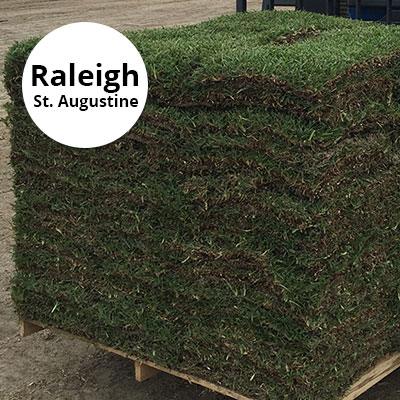
Raleigh St. Augustinegrass, a cold-hardy St. Augustine cultivar, was first discovered on a lawn in Raleigh North Carolina and released to the public by North Carolina State University in 1980. It has a medium green color with a coarse texture. Raleigh is best adapted to the heavier, organic, clay soils with medium to low soil pH in central and north Florida.
Raleigh was well received by sod growers throughout the southeast, but, unfortunately, little university research has been done to date on this cultivar. It is often described as highly tolerant of shade, drought, and cold, but no impartial evidence of these claims exists at this time.
- Medium blue-green with coarse leaf texture
- Excellent shade tolerance
- Excellent salt tolerance
Raleigh St. Augustine Characteristics
SOIL MANAGEMENT
- Soil test every two years.
- Amend soil to maintain pH between 6.0 and 7.0
- Know your soil type!
MOWING
-
Sharpen blades every spring.
-
Keep mowed between 2 to 4 inches.
-
Don’t cut of more than 1/3 the blade.
IRRIGATION
-
Don’t Overwater
- Water less in cooler fall months
- About 1 inch a week total irrigation spring & summer
- Water deeply, frequently, and in early AM
WEED CONTROL
- Pre-emergents prevent weeds from germinating
- Post-emergents kill weeds after they germinate
- A thick, lush lawn is the best deterrent to weeds
DISEASE CONTROL
- Overly wets grass + shade = fungus problems
- Apply systemic fungicide to prevent fungus outbreaks
- Use multiple fungicide applications to treat affected areas
INSECT CONTROL
- Use a broad spectrum insecticide that controls chinch bugs
- For a once-a-year treatment, July & August are good months
- Drought-stressed lawns are more susceptible to chinch bug injury
- If using a granular insecticide, water in after application


